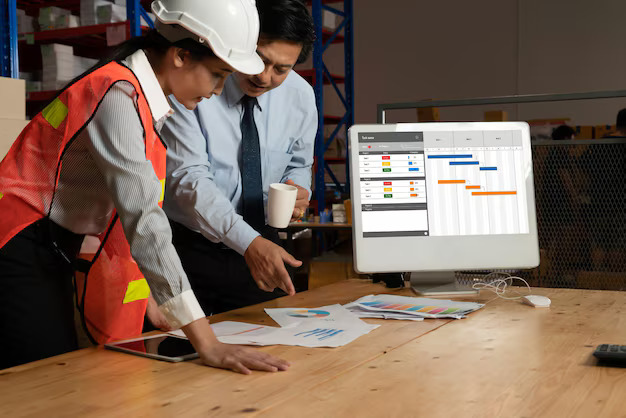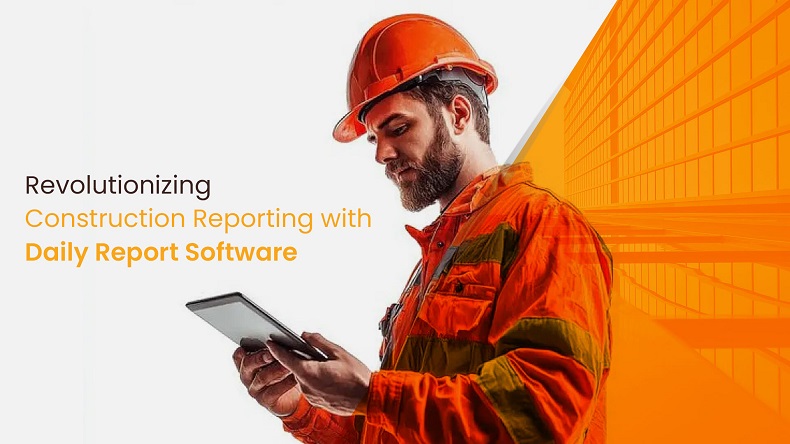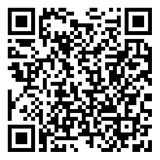Reading Time: 5 minutes
Introduction
Construction projects involve extensive complexities through multiple teams, tasks, condensed schedules, detailed documentation, and stakeholder communication. In previous projects, construction reporting was achieved through manual reports generated daily. This led to errors, delays, and communication bottlenecks. But the tides have turned, and the construction sector has been digitalized through construction daily report software for a transformative impact. It is used to make project tracking seamless, improve resource allocation, and improve team communication and collaboration.
What are construction daily reports and progress reports – let’s understand them.
In the construction fraternity, construction daily progress reports are pivotal deliverables for efficient construction project management. These reports chart daily activities while delivering crucial insights into project progress.
Completion of work:
A detailed snapshot of tasks done daily, which helps stakeholders flag bottlenecks and visualize complete project progress. This feature may encapsulate unique data including the concrete pouring completion to build a foundation, installing wiring within certain spaces, and framing progress on certain building floors.
Work Smarter, Not Harder
iFieldSmart empowers your team with AI-driven efficiency to simplify scheduling, boost collaboration, and keep projects on track.
Schedule a MeetingUse of equipment and labor allocation:
Comprehensive records of site machinery and labor working daily, facilitating detailed payroll management, and use of resources. This would also include worker count on the site, working hours, and equipment type like concrete mixers, cranes, etc.
Documenting material usage:
Documenting utilized and delivered materials, ensuring effective cost control and inventory management are parameters that need to be documented. This includes keeping a comprehensive record of concrete quantity, steel, lumber, and various other materials utilized. It also includes the calculation of overages and material shortages.
Managing a record of safety incidents:
Managing an accurate and complete record of safety issues, incidents, or other site issues facilitates a preemptive strategy to enhance risk management. This creates a safer working space. Details would include incident details, people who were involved, lessons learned, and the right action that was taken to resolve these issues.
Tracking weather conditions:
Assessing weather trends and patterns can influence project timelines, which allows swift changes and planning contingencies. This would include documenting rainfall, temperature, and various events that could impact site work and lead to higher delays.
Documenting site photos in real-time:
Keeping a visual documentation record helps various stakeholders realize a transparent snapshot of project progress and helps with the identification of potential problems. Photos captured on-site can help with work completion, assess various areas of site interest, and analyze existing tasks. Areas would include construction components that are complex and critical site installations.

Exploring the top 5 construction daily report software
The market boasts an array of construction daily report software options, each tailored to address specific project needs. Let’s delve into some of the top contenders:
The construction market consists of various construction daily report software platforms that are built for unique project requirements. Let’s understand a few of them.
Raken:
Raken focuses on a user-friendly dashboard within customized templates and mobile applications. This simplifies the generation of reports and simplifies data entry. A cloud-driven platform ensures quick access, communication, and collaboration across multiple project teams with capabilities including image management, real-time updates, and time tracking.
Fieldwire:
This platform helps stakeholders with real-time collaboration while enabling swift task management, seamless communication, enhanced plan viewing, and accurate drawings. An intuitive and robust dashboard facilitates issue tracking, inspections, and punch lists. Integrating with other platforms can enhance its capabilities.
iFieldSmart Technologies:
A centralized platform that helps stakeholders with real-time communication, collaboration, and data-sharing. iFieldSmart helps teams connect across various locations while supporting streamlined communication and data exchange. The use of mobile apps helps with field data capture, while analytics capabilities deliver valuable insights to achieve expedited decision-making.
Procore:
Procore offers in-depth construction management capabilities with accurate and comprehensive daily reporting. It covers safety incidents using a cloud-driven platform that facilitates unified data management. It also includes RFI tracking, document control, and submittals management to make workflows seamless.
PlanGrid:
PlanGrid offers capabilities of centralized file version control and plan management. Streamlining access to the latest project documents and drawings improves communication and reduces errors while supporting collaboration and efficiency.
What is the role of AI and ML in the construction of daily reports?
The reinforcement of Artificial Intelligence (AI) and Machine Learning (ML) is changing the capabilities of construction daily report platforms, which has created a new dimension in construction automation and reporting intelligence. AI-driven capabilities can automate data entry, and extract data from photos, multiple sources, and documents to reduce errors and save time.
Moreover, AI and ML algorithms can help assess project data to highlight trends, prevent costly delays, and enhance resource allocation. This can also help with identifying hazards, tracking safety conditions, and providing instant alerts which can contribute to a safer working site.
Heading to a conclusion
Construction daily report software is a crucial digital tool for present-day construction project management. It has transformed progress monitoring, collaboration, and communication across multiple teams. Using digital reporting solutions and enriching them with the capabilities of AI and ML, construction stakeholders can make swift decisions, address obstacles, and create high-impact handovers.
Whether it is a small or large infrastructure project, the choice of using the required construction daily report software improves project management. Using the capabilities of digital technology and setting the way for an effective, clear, and winning construction project requires sound construction daily reporting tools.








